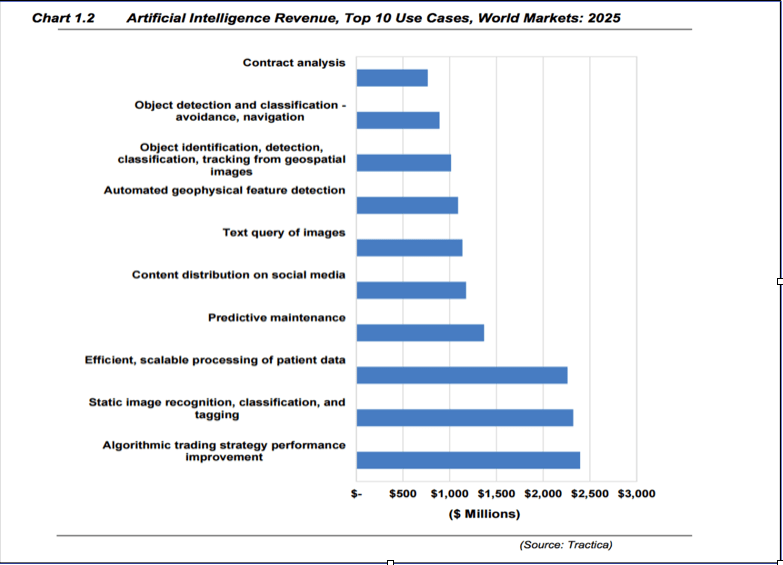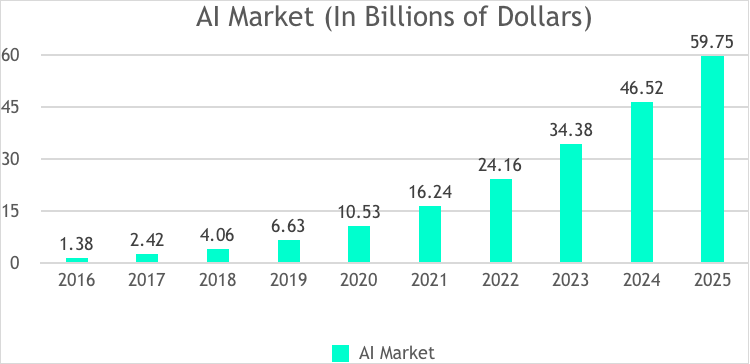Guest post by Amit Ganjoo, CEO of ANRA Technologies —
Artificial Intelligence is quickly becoming a buzzword in the technology industry. There has been a phenomenal growth in recent years in industries adopting artificial intelligence and Machine learning to automate operations and manufacturing processes. There is a marked shift to the use of artificial intelligence and machine learning in the finance, automobile and healthcare industries which will pave the way to transform many other industries as well.
Some of us may ask, what is Artificial Intelligence and why is it so important?
Artificial Intelligence or AI is the science and engineering of making intelligent machines. It is the utilization of computers to understand human intelligence and make tasks which would have otherwise been complex much easier. Some other terms relating to AI that are used commonly:
Machine learning or ML encompasses teaching a machine how to do a particular thing by feeding it a large set of data and then directing it to make predictions on the new data. The machine uses the provided training data provided to learn and understand trends which is used to make predictions on the validation data.
Deep Learning or DL is a subfield of machine learning which makes use of artificial neural networks, a mathematical system inspired by the way neurons function in the human brain.
Nowadays AI and its subfields are being used to implement image recognition and tagging, object detection and classification in pictures, automatic machine translation, automatic handwriting generation and game playing amongst other uses.
click on image for a larger version

According to a new report from Tractica, interest in implementing AI systems is surging among companies and institutions around the world. The market intelligence firm forecasts that the revenue generated from the direct and indirect application of AI software will grow from $1.4 billion in 2016 to $59.8 billion by 2025.
click on image for a larger version

Artificial Intelligence in Drones
AI is fast becoming an integral part of the drone industry by enhancing the intelligence of the drone systems with respect to flight operations, data management and most importantly traffic management. Some industries like construction, agriculture and mining are merging AI and drone systems.
A segment of AI gaining momentum is Deep Learning/DL. DL as already discussed earlier is an AI technique that gains knowledge through training a neural network, a computer system that’s designed to process information like the human brain. This neural network can be taught to identify objects when it is shown many images of a single type of object, such as automobiles. This is also how the drone is trained to recognize automobiles and distinguish them from other objects. The drone can then recognize new objects that it was not trained on like different type of automobiles.
How does a drone inspect a cell tower using AI? Conventionally, a drone pilot travels to the cell tower with the drone and flies the drone around the tower, recording data in form of pictures which is later reviewed by an expert. In most cases there is a shortfall which leads to the drone operator flying multiple missions to capture all the requisite data.
With the evolution in AI, we can remove this redundancy, improve safety of the ground crew and make drone inspections more efficient. Platforms like ANRA’s DroneOSS platform can address this gap by aiding the drone operators in mission as well as data management. The operator just needs to switch the drone on and the platform does the rest. It provides a complete end to end solution where it will design the optimum flight path for the drone in order to capture the most complete data for any use-case, fly the drone across this flight path and generate and analyze thorough 3D models based on the data captured.
Using AI and a bouquet of sensors, the drone would be intelligent enough to fly by itself, gather the data as needed while maintaining safety protocols. It can also autonomously use AI to understand what it is looking at, so if it is observing a rust spot or damage it can generate the initial report right there on the drone or upload it to the cloud as per the user’s requirements and specifications.
UAS Traffic Management (UTM)
As commercial and recreational drones fast become an integral part of our lives, the anticipated need for UAS Traffic management (UTM) is quickly becoming a reality. NASA has already set out on the path to solve this futuristic but relevant need where they envision drones flying in our skies while interacting with their UAS counterparts as well as high-altitude aircrafts. Just like we have an efficient traffic management system on ground to ensure a smooth flow of automobiles and pedestrians, there is an upcoming need for an efficient UTM in the air so as to ensure there are no mishaps on the ground (with humans) as well as while in the air (with manned aircrafts). All of this while soaring around the flying restrictions.

This UTM system would also enable low-altitude airspace operations by providing services such as airspace design, corridors, dynamic geo-fencing, severe weather and wind avoidance, congestion management, terrain avoidance, route planning and re-routing, separation management, sequencing and spacing and contingency management. All these services would only be possible through advanced AI practices where drones would be characterized as intelligent systems and take ownership of themselves.
Big Data and AI aids Data automation in Drones
AI is not only limited to making drones intelligent but also pioneering the way data is collected and analyzed. Private and governmental stake holders stand to be major benefiters of this new development. The convergence of big data with AI is shaping the future of how enterprises drive business value from their data and analytics capabilities. Drones may be able to gather data through pictures and videos, but the fact remains that the amount of data is enormous. A single drone mission may end up generating data anywhere in the range of 2-70 Terabytes. This is where Big Data and AI come into picture. Using these two breakthrough sciences, enterprises can gather relevant data and translate it into meaningful learning and results. The ability to access large volumes of data quickly is leading to better AI capabilities and the future of drones as autonomous centers of intelligence is not far now.
With all these technological advances in play within the drone industry, one can only imagine the growth in the capabilities of this market. ANRA hopes to be one of the key technology drivers in this fast-growing industry and at the same time aims to be a value addition for its customers commercial drone operations needs.
__________________________________________
 Amit Ganjoo is a serial entrepreneur and the Founder and CEO of ANRA Technologies and has over 20 years of aviation, telecom and wireless experience in both the federal and the commercial space. He’s a licensed pilot and an experimental aircraft builder, following a lifelong passion in aviation. Until December, he acted as the co-chair for FCC’s Technical Advisory Council (TAC) for 5G and IoT, which included ground and airborne autonomous vehicles. He was the Director of Engineering and Principal Architect at Ericsson, providing telecom solutions to Commercial Customers and Federal Government, where he was the recipient of the Athena Award.
Amit Ganjoo is a serial entrepreneur and the Founder and CEO of ANRA Technologies and has over 20 years of aviation, telecom and wireless experience in both the federal and the commercial space. He’s a licensed pilot and an experimental aircraft builder, following a lifelong passion in aviation. Until December, he acted as the co-chair for FCC’s Technical Advisory Council (TAC) for 5G and IoT, which included ground and airborne autonomous vehicles. He was the Director of Engineering and Principal Architect at Ericsson, providing telecom solutions to Commercial Customers and Federal Government, where he was the recipient of the Athena Award.
Alan is serial entrepreneur, active angel investor, and a drone enthusiast. He co-founded DRONELIFE.com to address the emerging commercial market for drones and drone technology. Prior to DRONELIFE.com, Alan co-founded Where.com, ThinkingScreen Media, and Nurse.com. Recently, Alan has co-founded Crowditz.com, a leader in Equity Crowdfunding Data, Analytics, and Insights. Alan can be reached at alan(at)dronelife.com







[…] Source […]